
Journal of Water Chemistry and Technology
Scope & Guideline
Transforming Water Management through Cutting-edge Research
Introduction
Aims and Scopes
- Water Treatment Technologies:
The journal emphasizes research on various water treatment methods, including adsorption, photocatalysis, electrochemical processes, and advanced oxidation processes. These studies aim to improve the efficiency and effectiveness of removing contaminants from water. - Environmental Impact Assessment:
Publications often include assessments of the environmental impacts of water pollutants, focusing on the toxicity of various substances and their effects on aquatic ecosystems. This area highlights the need for sustainable practices in water management. - Innovative Materials for Water Purification:
The journal showcases the development and application of new materials, such as nanomaterials and biosorbents, for enhanced water purification processes. This includes studies on the synthesis, characterization, and optimization of adsorbents and catalysts. - Hydrochemistry and Water Quality Monitoring:
Research on the hydrochemical characteristics of various water sources and the monitoring of water quality parameters is a core focus. This includes studies that analyze the suitability of water for different uses, such as irrigation and drinking. - Wastewater Management Strategies:
The journal covers innovative strategies for wastewater treatment and management, including biological, physical, and chemical methods. This encompasses case studies and modeling approaches to optimize treatment processes.
Trending and Emerging
- Nanotechnology in Water Treatment:
Recent publications increasingly explore the application of nanotechnology, particularly in the development of novel nanomaterials for water purification. This trend highlights the potential of nanoscale materials to enhance adsorption and degradation processes. - Bioremediation and Use of Natural Materials:
There is a growing focus on bioremediation techniques, utilizing natural materials and biological agents to treat contaminated water. This trend reflects a broader shift towards sustainable and environmentally friendly practices in water management. - Integrated Water Management Approaches:
Research is trending towards integrated approaches that combine multiple treatment technologies and strategies for wastewater management. This includes studies on hybrid systems that optimize the treatment process efficiency. - Impact of Climate Change on Water Resources:
Emerging research themes include the effects of climate change on water quality and availability. This trend is critical as it addresses the urgent need to understand and mitigate the impacts of changing environmental conditions on water resources. - Advanced Analytical Techniques for Water Quality Assessment:
There is an increasing interest in employing advanced analytical techniques, such as spectroscopy and chromatography, for detailed water quality assessment. This trend underscores the importance of precise measurement and understanding of contaminants in water.
Declining or Waning
- Conventional Chemical Treatment Methods:
There has been a noticeable decline in publications focusing solely on traditional chemical treatment methods, such as coagulation and flocculation. Researchers are increasingly exploring more advanced and integrated approaches, which may explain this trend. - Low-Tech Water Purification Techniques:
Research on low-tech or rudimentary water purification methods has diminished, possibly due to a growing preference for more innovative, efficient, and sustainable technologies that can be applied at a larger scale. - Static Water Quality Assessment Studies:
There is a waning interest in static assessments of water quality without accompanying technological solutions or treatment methodologies. Researchers are now more inclined to couple water quality monitoring with treatment innovations.
Similar Journals
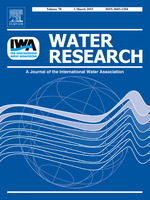
WATER RESEARCH
Driving impactful discoveries in water science since 1967.WATER RESEARCH, published by Pergamon-Elsevier Science Ltd, is a premier international journal dedicated to the advancement of knowledge in the interdisciplinary field of water science and technology. With a significant impact factor, WATER RESEARCH holds a distinguished position, consistently ranking in the top quartile (Q1) across multiple categories including Civil and Structural Engineering, Environmental Engineering, and Pollution. Established in 1967 and set to continue its legacy until at least 2024, this journal provides a vital platform for researchers and professionals to disseminate cutting-edge findings related to water sustainability, quality, and management. Although the journal follows a traditional access model, its commitment to disseminating impactful research ensures that it remains an essential resource for academia and industry alike. With a rigorous selection process, the journal includes articles that significantly contribute to the understanding and resolution of global water-related challenges, making it an invaluable asset for researchers, students, and practitioners engaged in this critical area of study.
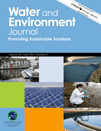
WATER AND ENVIRONMENT JOURNAL
Advancing knowledge for a sustainable future.WATER AND ENVIRONMENT JOURNAL is a prominent interdisciplinary journal dedicated to the latest research and advancements in the fields of water resources, environmental engineering, and pollution management. Published by WILEY, the journal has established itself as an essential resource for academics, practitioners, and policymakers since its inception in 1987. With an impressive impact factor reflecting its robust influence, it ranks in the Q2 and Q3 quartiles across multiple categories, including Water Science and Technology, Environmental Engineering, and Management, Monitoring, Policy and Law. The journal welcomes high-quality research articles, reviews, and case studies that address the critical challenges facing water and environmental sciences. As an open access publication, it provides a platform for widespread accessibility and engagement, ensuring that the knowledge generated is disseminated to a diverse audience. With a commitment to advancing understanding and solutions in water-related issues, WATER AND ENVIRONMENT JOURNAL plays a crucial role in shaping the future of environmental research and technology.
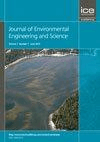
Journal of Environmental Engineering and Science
Transforming Environmental Engineering Through Rigorous ScholarshipJournal of Environmental Engineering and Science, published by Emerald Group Publishing Ltd, is a prominent academic platform dedicated to the dissemination of cutting-edge research in the fields of environmental engineering, chemistry, and science. This journal, with ISSN 1496-2551 and E-ISSN 1496-256X, features a comprehensive collection of studies that delve into innovative methodologies and practical applications aimed at solving pressing environmental issues. Having been published since 2002, it spans critical research years from 2015 to 2024, offering insights that are invaluable to both academics and practitioners alike. With its current rankings placing it in the fourth quartile for Environmental Chemistry and Engineering, and the third quartile in miscellaneous Environmental Science, the journal serves as a significant yet under-utilized resource for emerging scholars seeking to contribute to the ecological discourse. Though it does not offer Open Access, the content is meticulously curated to uphold academic rigor, catering especially to researchers, professionals, and students keen on advancing their understanding of environmental challenges and engineering solutions.
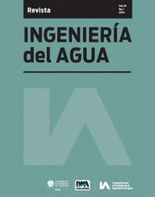
Ingenieria del Agua
Transforming Challenges into Opportunities in Water ManagementIngenieria del Agua, published by Universitat Politècnica de València, Editorial UPV, is a prominent open-access journal dedicated to the field of water engineering and management. With its ISSN 1134-2196 and E-ISSN 1886-4996, this journal has been facilitating the dissemination of critical research and innovative practices in water resources since 1994. With a commitment to providing unrestricted access to high-quality research, Ingenieria del Agua aims to serve as a pivotal platform for researchers, professionals, and students alike. Focused on the intersection of hydrology, environmental engineering, and sustainability, the journal encourages submissions that address contemporary challenges in water resource management, promoting advancements that are vital for both ecological conservation and societal needs. By fostering a collaborative academic environment, it plays an essential role in shaping the future of water engineering.

Membrane and Water Treatment
Innovating Water Solutions for a Sustainable FutureMembrane and Water Treatment is a prominent academic journal published by TECHNO-PRESS, dedicated to the fields of chemical engineering and water science. With an ISSN of 2005-8624 and E-ISSN 2092-7037, this journal aims to disseminate innovative research and technological advancements related to membrane technologies and water treatment processes. Since its inception in 2010, it has steadily contributed to the body of knowledge, achieving a Q3 ranking in Chemical Engineering and a Q4 ranking in Water Science and Technology as of 2023. Positioned within the 35th percentile of its respective categories in Scopus, it serves as a critically accessed platform for researchers and professionals eager to explore cutting-edge methodologies and solutions to water management challenges. Based in South Korea, Membrane and Water Treatment is committed to providing a scholarly environment where interdisciplinary and collaborative research can flourish, ensuring that readers remain at the forefront of developments in this essential field.
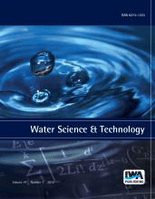
WATER SCIENCE AND TECHNOLOGY
Elevating the discourse on water quality and conservation.WATER SCIENCE AND TECHNOLOGY, published by IWA PUBLISHING, is a leading academic journal dedicated to advancing the field of water science and technology. With a rich history dating back to 1970, the journal provides a platform for innovative research and technological advancements, catering to the vital challenges faced within the realms of environmental engineering and water resource management. As evidenced by its strong ranking in Scopus, where it holds a position of #86 in Water Science and Technology and #77 in Environmental Engineering, the journal exemplifies significant scholarly contributions, reflected in its Q2 quartile status in both categories as of 2023. Although not an open access journal, WATER SCIENCE AND TECHNOLOGY ensures that its articles are widely available to researchers, professionals, and students passionate about sustainable water solutions. With a continued commitment to excellence, this journal plays a crucial role in shaping the discourse surrounding water quality, conservation, and technology innovation, making it an essential resource for all stakeholders in this critical field.
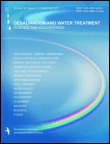
Desalination and Water Treatment
Innovating Solutions for a Thirsty WorldDesalination and Water Treatment is a pivotal journal in the realm of water science and technology, focusing on the critical issues surrounding water desalination and treatment processes. Published by DESALINATION PUBL in the United States, this journal, with ISSN 1944-3994 and E-ISSN 1944-3986, serves as an essential resource for researchers, professionals, and students engaged in ocean engineering, pollution control, and innovative water management strategies. With a transitional coverage from 2009 to 2024, it holds a respectable position in the third quartile of various categories, including Ocean Engineering, Pollution, and Water Science and Technology, as of 2023. The journal is indexed in Scopus, reflecting its contribution to the field by ranking within the 39th to 45th percentile across relevant subject areas. Although not an open-access publication, it remains a crucial platform for disseminating influential research, thereby enhancing the global repository of knowledge on water treatment methodologies and sustainable practices in desalination.

ACS ES&T Water
Pioneering interdisciplinary approaches to water sustainability.ACS ES&T Water, published by the American Chemical Society, is a leading peer-reviewed journal focused on the interdisciplinary field of water science and technology. Since its inception in 2021, the journal has rapidly established itself as a prominent platform for research, boasting an impressive impact factor and ranking in the Q1 category across various disciplines, including Chemical Engineering, Chemistry, Environmental Chemistry, and Water Science and Technology. With a current Scopus rank of #66 out of 261 in Environmental Science and a remarkable percentile of 74%, ACS ES&T Water is dedicated to advancing the understanding of water-related challenges and solutions through high-quality research. The journal aims to facilitate communication among researchers, professionals, and policymakers by providing open access to innovative studies and methodologies that address critical issues in water resource management and sustainability. Collaborating at the intersection of chemistry and environmental science, this journal is essential for anyone invested in the future of global water security and innovation.

Water Practice and Technology
Advancing Knowledge for Global Water ChallengesWater Practice and Technology is a distinguished open-access journal published by IWA PUBLISHING, dedicated to disseminating cutting-edge research and practical insights within the field of water science and technology. With an E-ISSN of 1751-231X, the journal has been at the forefront of sharing knowledge since its inception in 2011 and has transitioned to open access in 2021, providing unrestricted access to high-quality research articles. Based in the United Kingdom, this journal plays a vital role in advancing the understanding of water resource management, treatment technologies, and environmental sustainability. As of 2023, it is categorized in the Q3 quartile for Water Science and Technology with a Scopus rank of #157/261, placing it in the 40th percentile among its peers. Researchers, professionals, and students alike will find the journal a valuable resource for the latest trends, innovations, and practical applications in the water sector, facilitating a collaborative approach towards addressing global water challenges.
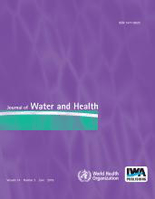
JOURNAL OF WATER AND HEALTH
Pioneering research for a healthier world through better water management.The JOURNAL OF WATER AND HEALTH, published by IWA PUBLISHING, serves as a leading platform for disseminating innovative research related to water quality, sanitation, and public health. With its ISSN 1477-8920 and E-ISSN 1996-7829, this esteemed journal significantly contributes to the fields of Public Health, Environmental Science, and Microbiology, as evidenced by its robust rankings in several quartiles, including Q2 in Public Health and Water Science and Technology in 2023. This periodical enjoys a convergence of years from 2003 to 2024, underscoring its continuous relevance in addressing critical global issues such as water safety and infectious diseases. Although not an open-access journal, the insights and findings presented are pivotal for researchers, professionals, and students eager to contribute to the sustainable management of water resources and health improvements worldwide.